Bristol Airport: past, present and future
Bristol Airport was officially opened in 1957, having previously been an RAF airfield. Since opening, Bristol Airport has steadily grown larger.
In the 1960s, more people started to travel abroad on holiday and jet planes transformed air travel. Changes to the Airport that decade included a longer runway, an extended terminal, a new control tower and a cargo shed.
In the late 1990s, liberalisation of Europe’s aviation market made air travel accessible to millions of people.
A new terminal building opened in 2000 at the same time the low-cost airline Go, which was subsequently acquired by easyJet, brought flights to many new destinations.
In 2006, the first Master Plan for Bristol Airport was published. This set out how the Airport should develop as it moved towards 9 million passengers per annum (mppa) by 2015 and a vision of how the site could look in 2030 to reach a capacity of 12.5 million.
Through the 2010s, the Airport grew steadily as the terminal was expanded and new stands were added.
By 2017, the Airport was serving 8 mppa, and this year, for the first time, 10 million people used the Airport.
Now, having served 10 million passengers in a twelve-month period for the first time ever, and with planning permission granted to develop the Airport to accommodate 12 mppa, we are turning our focus to the Airport’s long-term future, and growth.
Investing in our region
As the Airport grows in the future, its ability to deliver economic impacts in North Somerset, the Bristol City Region, the South-West and South Wales will also grow.
The Airport currently contributes around £2 billion of Gross Value Added to the South West of England and South Wales economy.

We estimate that an additional 1,000 jobs will be provided at the Airport, primarily for local people, including areas including the southern fringes of Bristol, Weston-super-Mare and rural communities in the area. Overall, the delivery of this final draft Master Plan would support around 37,000 jobs (through direct, indirect, supply chain and inbound tourism) across the South-West and South Wales. This is an increase of over 7,000 jobs.
By serving 15 mppa, Bristol Airport would increase its economic contribution by 50% to £3 billion. In North Somerset alone, this contribution would be worth £720m.
Community investment
Bristol Airport is proud to invest in its local communities and the people it serves.
The Bristol Airport Local Community Fund invests in a range of local projects that benefit the local community and the environment.
Overall, Bristol Airport has granted £1.8 million in projects for the surrounding community since the fund was set up in 2012, and will continue to support the community. Each year, we will contribute £150,000 to new projects. Decisions about how and where to invest funding are made in partnership with North Somerset Council.
We have set up a Community Interest Company (CIC), and funding decisions are made between Bristol Airport and North Somerset Council representatives, with funding awarded to communities most affected by Airport operations.
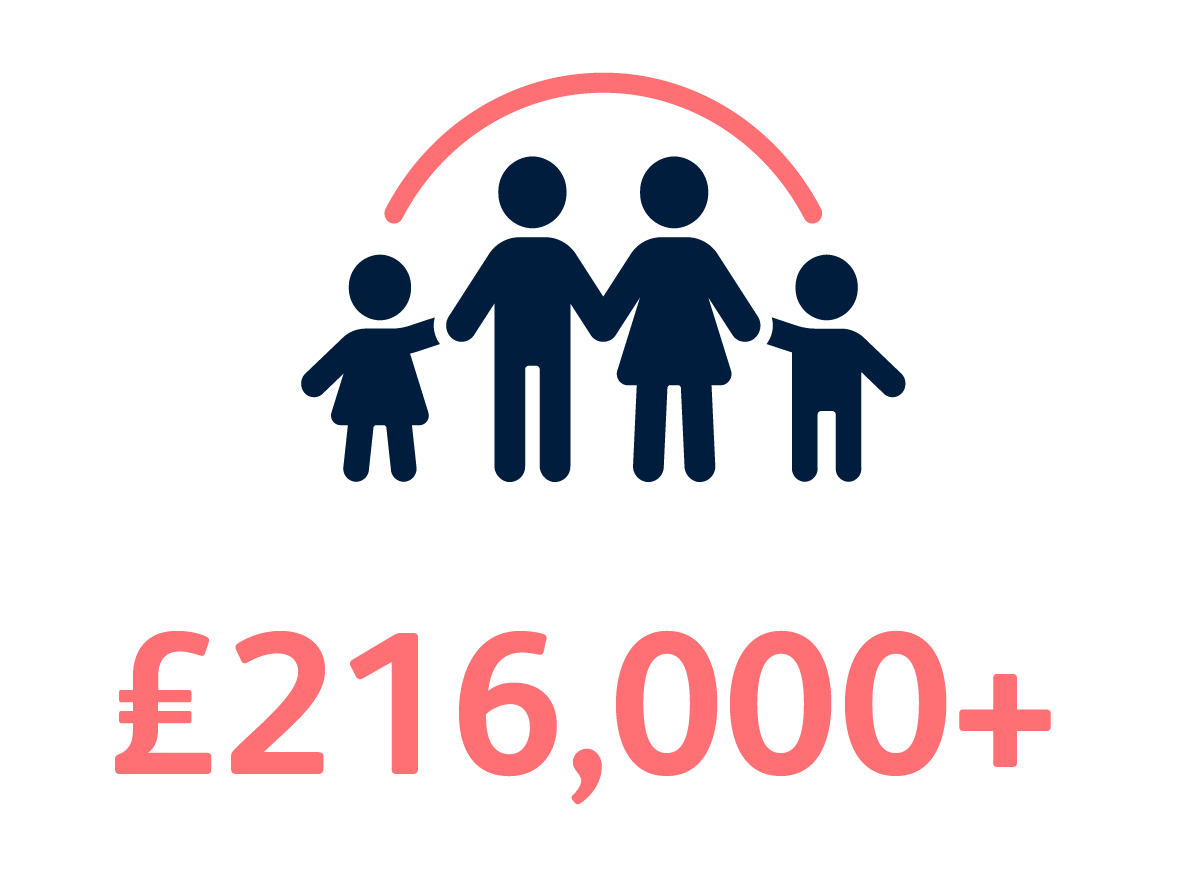
In 2023, the Fund provided grants totaling £216,628 to 63 local projects

investment in community projects every year
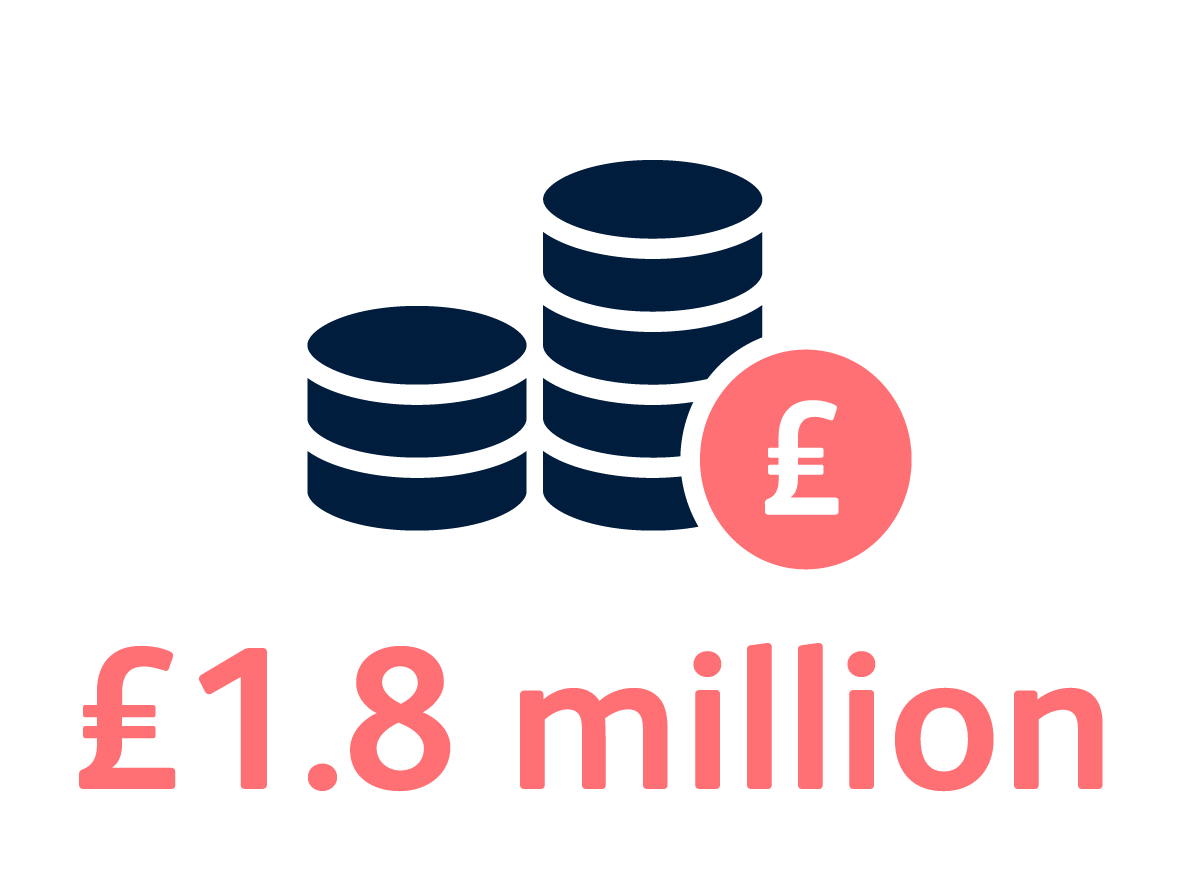
invested to date in community projects
Climate: our journey to net zero
Our approach to carbon management, along with our proactive drive to work with airlines and other airport businesses to reduce their emissions, has been awarded with the highest accreditation amongst UK airports.
Our Sustainability Strategy sets challenging targets and actions for how we will decarbonise our own operations and we are on track to meet our net zero operations commitment by 2030.
Net Zero operations
We’re investing millions every year to decarbonise our operations:
Our vehicles are going electric – including converting our airside buses to electric and buying new electric shuttle buses..
Our remaining diesel shuttle buses now run on hydrotreated vegetable oil (HVO) – a fossil free alternative to diesel – reducing emissions by up to 90%.
We’ve built a new 2.8 acre solar array – and we use 100% renewable electricity.
We’re working to remove gas heating from our terminal by 2026, to be replaced by air source heat pumps.
We’re changing our A1 Airport Flyer and A3 Weston Flyer from diesel to electric buses.
A new ultra-fast electric vehicle charging hub will be built in 2025 – helping taxis and passengers move to electric vehicles.
Expand the decarbonisation timeline below to find out about our progress to date, key decarbonisation milestones for Government and the aviation sector, and our plans for further decarbonisation in future.
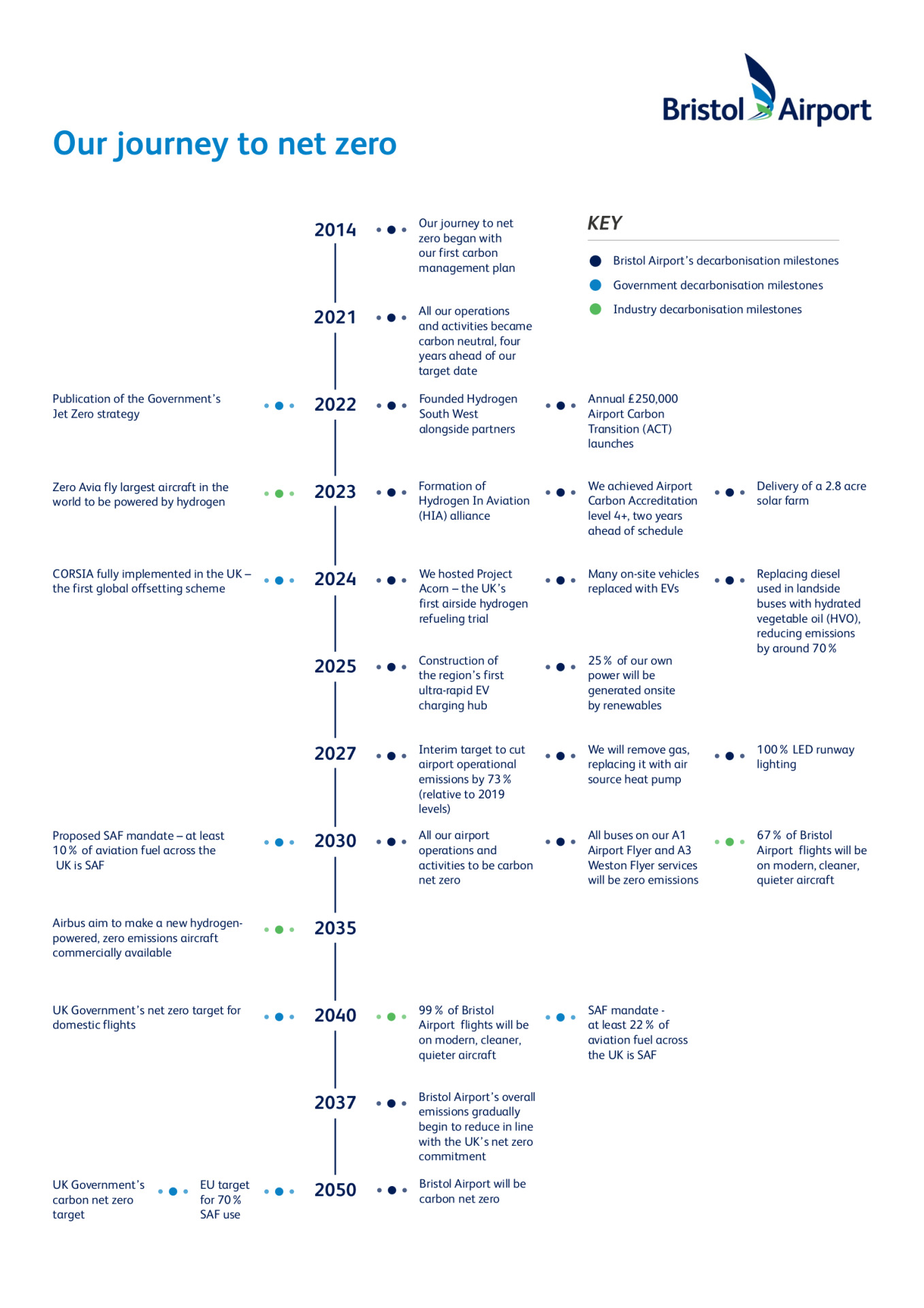
Flight
The aviation industry and the UK Government have set out roadmaps to reach net zero while allowing room for growth in flights.
This will require a combination of Sustainable Aviation Fuel, new technology, and more efficient aircraft.
Bristol Airport has been leading on the development of zero emissions hydrogen flight technology, including hosting this trial of hydrogen fuelled ground equipment.
It is anticipated that Airbus’ zero emissions hydrogen-powered aircraft will be available from 2035, towards the end of our Master Plan period. As most of our flights are short haul, this aircraft could serve many our routes and so we have begun to consider the infrastructure that will be required at Bristol Airport to support these aircraft.